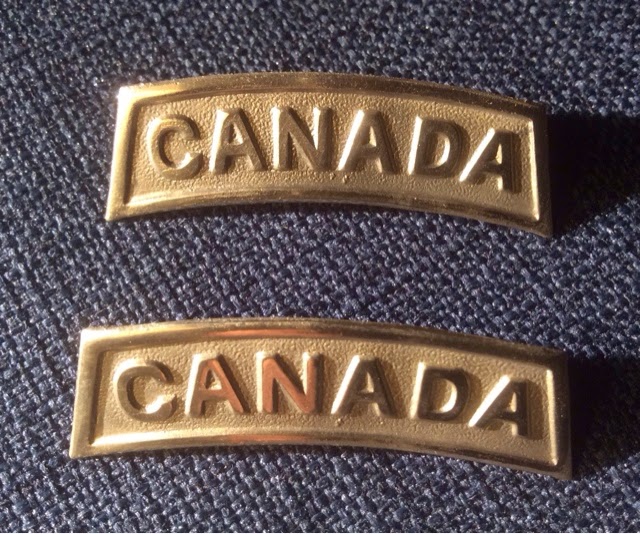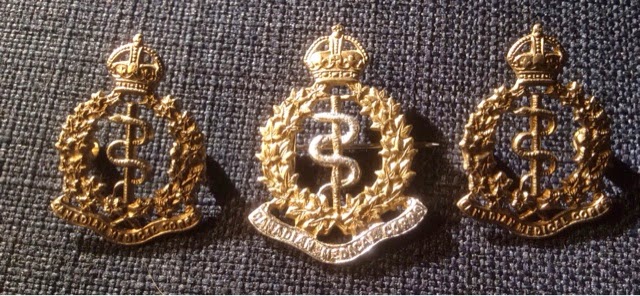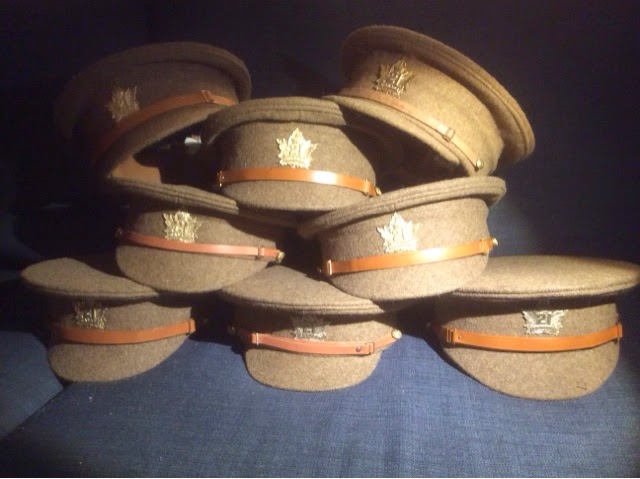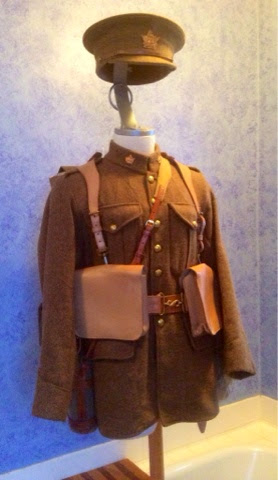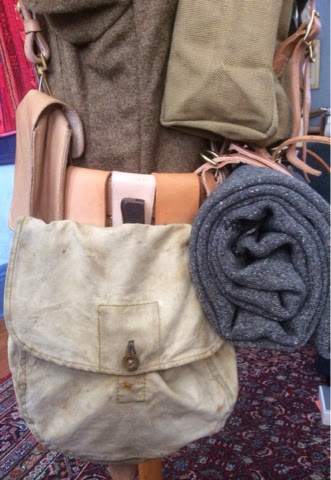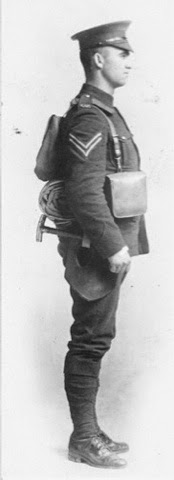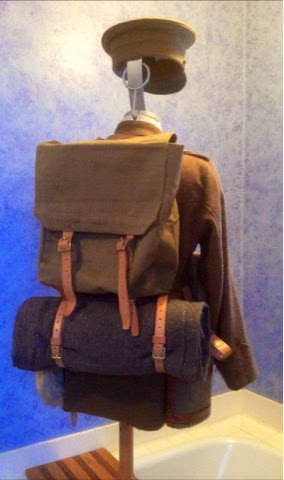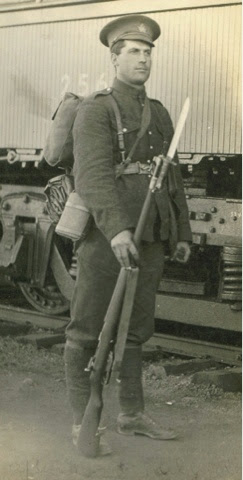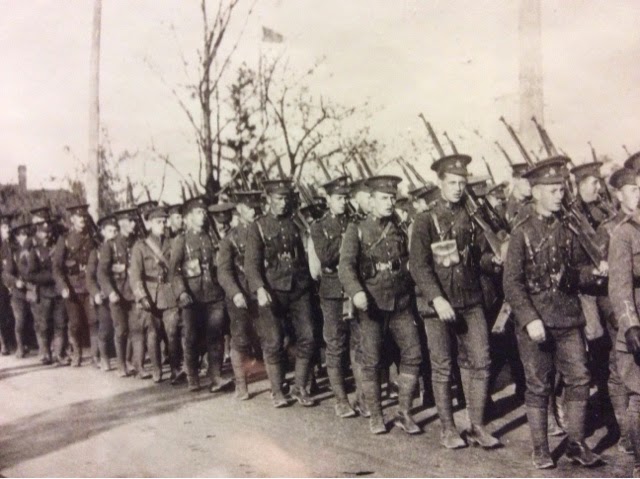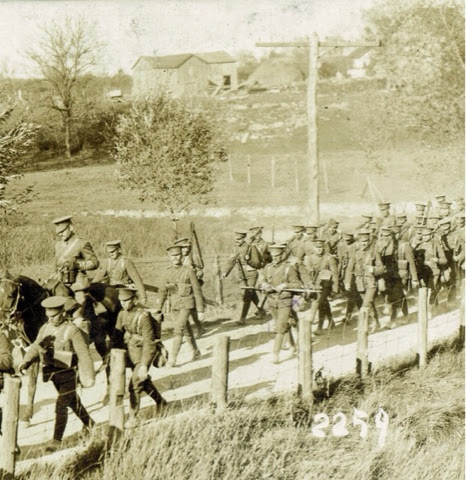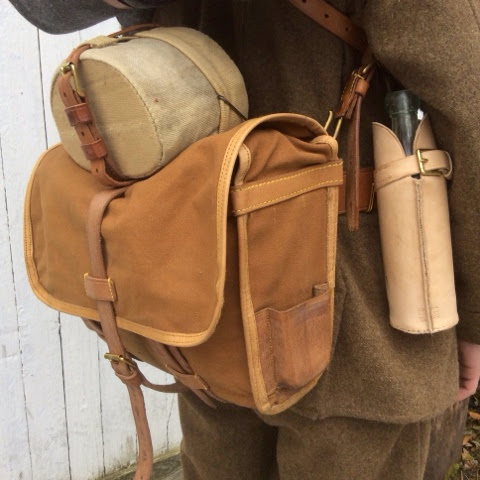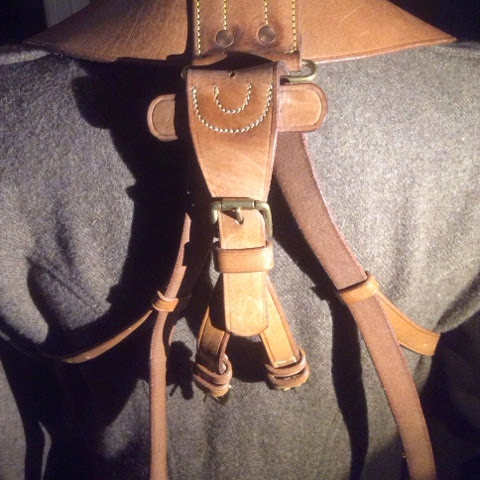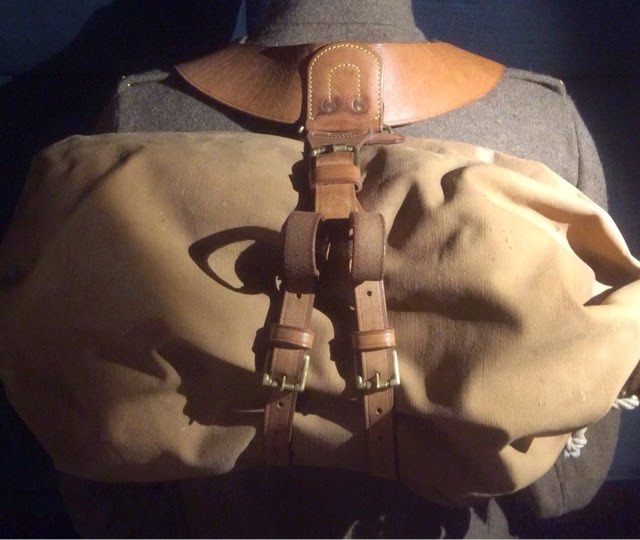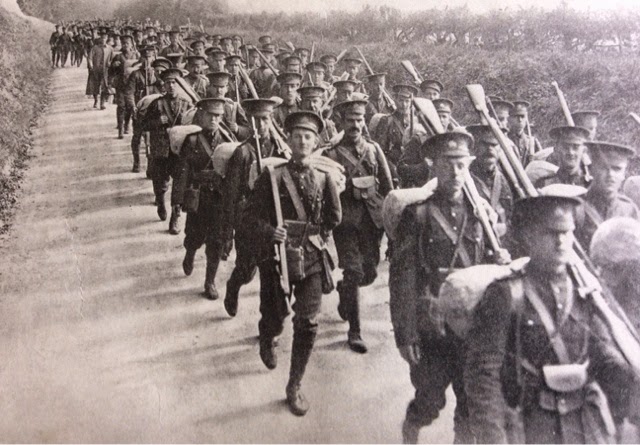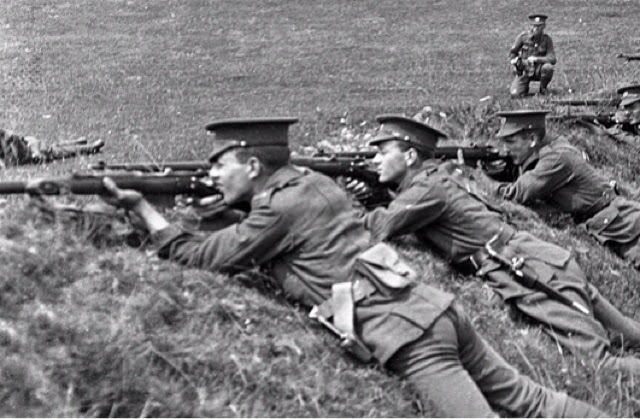The Oliver Pattern is a complex tangle. When it's together its a devil to put on, but when it's on, as long as it's not heavily loaded, it's a smart looking set.
To start the belt must be adjusted to be worn to a comfortably tight fit around the belly button. The yoke and its buckled ends will have to be adjusted to this position which might take repeated takings on and off until all is right.
The yoke divides and splits into six straps. The inner of the forward leading straps (3/4") buckles to a "Y" strap. The backward leading 3/4" strap also connects to the other side of the "Y".
These two now united as a pair will hook on the two "O" rings on the belt or onto the loops on the ammunition pouch.
The 1” forward strap will lead backwards and buckle onto its own short strap and hook onto the valise. The valise is to be used as the Boer War option, while a great coat roll strap is required as the attachment point for the Great War variation. In both cases the valise or the great coat straps will have the belt threaded through them.
The yoke and its straps can be attached to the belt once the valise or great coat roll are in place. It is a challenge to put the assembly on and may require assistance. If the hooks are too open they might come unhooked. It may be necessary to squeeze the hooks closed so they are slightly tight to engage. At any rate, keep adjusting until all seems balanced for tension. If the fit is right it should be near impossible to get out of the equipment.
Having adjusted the straps the other components can be added. This would be the bayonet frog and the water bottle for the Boer War option.
The ammunition pouch is more easily added after everything is in place and on the body. It may take some work to loosen the leather so it can be threaded on a belt end. Ultimately it is pulled back to cover the buckle and the forward straps can be attached to it. Alternatively I've seen it set to the right side leaving the belt buckle exposed. This has a certain practical efficiency which may have been discovered by the men who were forced to wear the equipment, and not planned or permitted by those who made them wear it.
The valise can also take the mess tin. It is possible to use the valise straps to snug down the mess tin handle. An extra belt improves the situation. This belt can pass through a central leather lead on top of the valise.
Also to be worn is the large "Y" strap assembly, called a "cape brace", which passes through the big loop at the middle of the yoke and the keepers on the rear straps. This variously binds and attaches blankets, ground sheets, great coats, and kit bags. The use with a kit bag seems to be the Great War option when the valise has been dispensed with and the blanket roll has taken its place.
Don't forget, all this equipment is available at What Price Glory. Here's the link to use:
This photo, below, is in Kingston in the winter of 1915. The soldiers departed for the Western Front in May of that year. Three quarters of the city turned out to watch 1000 men leave. We will commemorate this and the departure of the Queen's University Stationary Hospital Corps in May 2015. See my blog on Great War commemorations.
Another part of the gear is the haversack, worn on the left side under all the leather webbing. If it's empty it can be rolled up and the flap fastens on the rear button to make a kind of sausage roll.
In the Boer War the glass bottle was ceremoniously smashed and replaced with a British tin canteen. By the Great War this canteen was now the classic kidney shape on a sling. The canteen was worn both under and over the leather strapping. Certainly it was easier to get at if it was on top. This photo, taken in England, shows the canteen variously accessible and under a strap.
These old photos give an insight into the real uses of the equipment. In the Great War the Oliver Pattern was never used in action. Below, on Salisbury Plain, the "cape brace" is seen on some and not others, while one man's mess tin has completely slipped.
Here, below, another option for the ammo pouch means it's actually accessible.
And note in this last photo just how high everything is worn.



